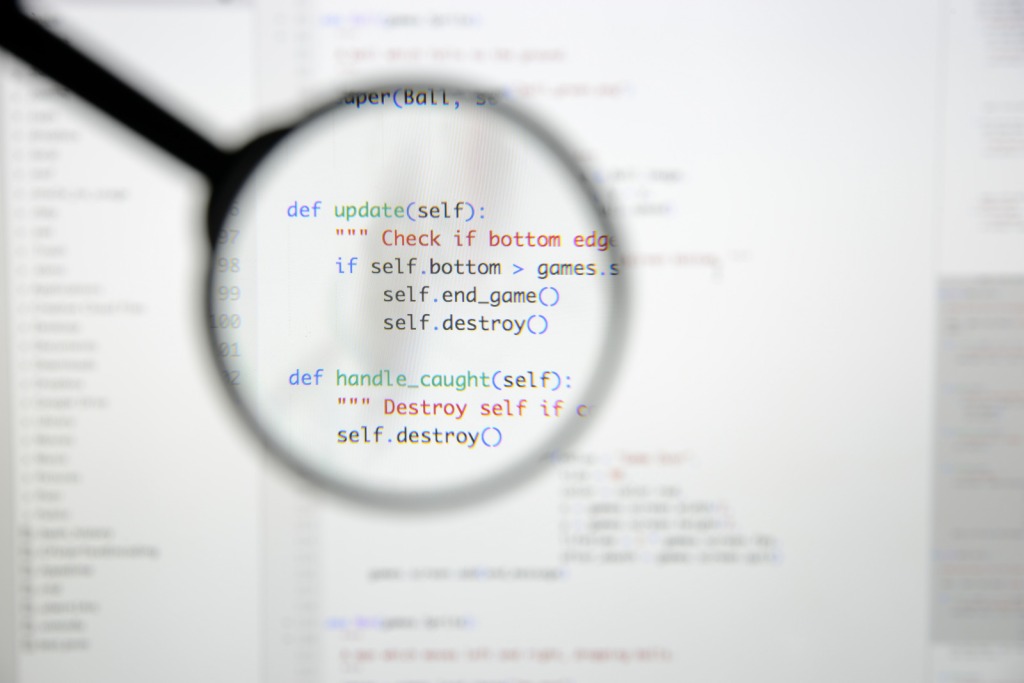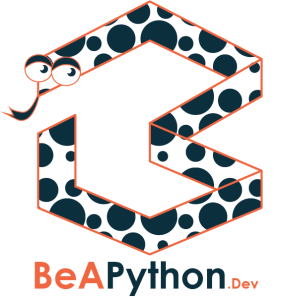If you have spent time in online tech forums, there is a chance you have experienced an ongoing debate about the relative merits of object-oriented programming and functional programming, including how they differ and the better choice.
Most people have been asking whether they should program in an object-oriented programming style or move to functional programming and which one is better. The program paradigms tend to differ from one another based on their features such as modularity, control flow, and state handling. Ultimately individuals and companies will prefer a program that is easier to maintain and extend.
The answer to these concerns among people is that one is not superior to the other when comparing functional to object-oriented programming in Python. This is because the two are not comparable since they are used for different purposes. They are not pitted against each other when discussing programming and are not the only approaches that could serve you. Your choice of a programming approach will depend on what you are trying to do within your application. In the rest of this article we will dive deeper into what the differences are and when it would be better to chose one over the other.
Definitions of the Terms

Functional programming is a technique that emphasizes the evaluation of functions. It gets its name from writing functions that provide the main source of logic in a program. The concept behind functional programming is for the functions to be stateless and rely only on the given inputs to produce an output. Functional programming is a paradigm that treats computation as the evaluation of mathematical functions and avoids changing states and mutable data. It is based on different concepts, including pure functions, recursion, high order functions, type systems, and referential transparency.
On the other hand, object-oriented programming is a paradigm based on the concept of objects which contain data structures in the fields known as attributes and codes in the form of procedures, also known as methods. The most popular object-oriented programming language is class-based, which means objects are presented as instances of classes. The main features of object-oriented programming are an abstraction, inheritance, polymorphism, and encapsulation.
These two programs are both support by Python, which is one of the popular programming languages among developers rising above Java in popularity. It is a modern microcontroller, where most coding boot camps will start you off with Python because of having eye-friendly languages. Most people have been introduced to Python as an object-oriented language since most of its tools are suited to having data and function bundled up together. However, Python supports both functional and object-oriented programming language, and its functions are equally as important for programmers and data scientists.
Understanding ideal times to use objects or functional modules will make you a more desirable developer. It is common to see large python code bases that switch between these two paradigms based on specific goals and requirements.
Stefan B
Comparisons between the Two Program Paradigms in Python

Before deciding which programs to use, you need to understand the advantages and disadvantages, as well as how they resemble or differ from one another. In this case, the easiest way of introducing functional programming is by comparing it to something you are already aware of, which is object-oriented programming. Let us look at the examples of the two approaches, using Python because it natively supports both styles and is easy to read.
Almost all modern programs use functions in their programming. A pure function is where the return value of the program depends on the input without side effects, and the function does not alter data passed into it. Functional programming thus demands that your functions cannot have side effects. Lack of side effects means it does not make any impact on code that is running on multiple processors. In contract, pure object-oriented programming has side effects that may affect the processors and is not good for big data processing. An example of a side effect is changing the state of a passed in object, within the scope of a function, thus altering the contents of the object outside of the function scope.
Object-oriented programming can mean different things to different people. The programming language is used well when you have a fixed set of operations, and when you are performing a few operations with common behavior and different variants. At the same time, OOP is good when you have a fixed set of operations, and you primarily add new things. On the other hand, functional languages are used when you have a fixed set of things, and you primarily add new operations to existing things.
The object-oriented programming is a way of keeping data and behavior wrapped up in a single object. This means all data and functions are bundled up together and programmed on the same wavelength. This is different from a functional programming language that has a set of assumptions that functions are not bundled with data.
Most people who write Python are almost certainly better off writing object-oriented code. Therefore, if you are new to programming, I would recommend starting with an object-oriented language by writing the code and deep learning algorithms provided by Python. However, you can use any of the function-style paradigms, such as functional programming, in place of the object-oriented program after mastering the concepts. For example, you can use functions programming instead of OOP in any context with Python, since the computer does not care about any paradigm.
Similarities between the Two Program Paradigms
Both functional programming and object-oriented programming have the shared goal of creating understandable and flexible programs free of bugs. They each have two primary components: the data comprising of stuff a program knows, and behaviors comprising of stuff a program can do with the data.
If you are creating a program with all records in a database, you will not have to transfer the data to and from the database. Using object-oriented programming languages, you can use the classes to generate objects, with the classes telling how to construct the object, how it looks like, and how it should behave.
Python supports both functional programming and object-oriented programming since it is a multi-paradigm that supports several languages. In a multi-paradigm language such as Python, you may want to model some things using functional programming and get great support to structured programming.
Differences between functional and object-oriented programmers

The first difference is that functional programming emphasizes the evaluation of functions, while object-oriented programming is based on the concept of objects. Secondly, functional programming follows the declarative model compared to the imperative programming model of object-oriented programming. Furthermore, the Functional paradigm uses immutable data, compared to OOP that uses mutable data.
The two program languages have different approaches to how a programmer can create those programs. This means how the functional working program is achieved based on whatever approach you choose. For example, Functional programming states that data and behavior are distinctively different and should be kept separate for clarity. In contrast, OOP says that bringing together data and behavior in a single location makes it easier to understand how a program works. This does not mean one programming language is better than another.
Functional programming has more academic and scientific origins and uses compared to object-oriented programming. It is considered declarative programming because it is done with expressions rather than states. The basic difference between the two programs is that functional programming focuses on what we are doing, while the object-oriented focus on how we are doing it. While functional programming provides high performance in the processing of large data for applications, the object-oriented application cannot be used for big data processing.
| Functional | Object Oriented |
|---|---|
| Uses PURE functions | Encapsulates functionality using classes |
| Avoids shared states and mutable data | State is stored in the properties of the class |
| Declarative | Imperative |
| Concise and easier to test | Designed to take advantage of programming tricks to be testable such as “dependency injection” |
Advantages of Functional Programming
Pure functional programming will be useful if you are in a heavily concurrent environment. The programming language supports several programming languages such as Lisp and Wolfram, among other domain-specific languages. This makes it a great fit for data science work and a popular language among data scientists. These languages can be translated into an interactive environment that makes it easier to understand codes. However, it does not work on executive commands or statements as it evaluates expressions.
At the same time, functional programming provides several advantages such as efficiency, nested functions, lazy evaluation, parallel programming, and bug-free codes. This means it is easy to write the function having statements to executive specific tasks for the said application. Furthermore, the function can be easily invoked and reused, which helps the code to be managed without having to write the same thing or statement again.
Advantages of Object-Oriented Programming
Object-oriented programming has high efficiency due to the abstraction feature, which helps in letting useful information and data to the user. It also allows a user to hide the irrelevant data from a user using the encapsulation feature, which prevents the user from unauthorized access. In object-oriented programming, the objects with data, functions, and methods are referred to as first-class citizens.

Conclusion
In essence, both functional and object-oriented programming are concepts of programming language with different methods of data storage and manipulation. For example, data in functional programming is expected to be pure and stateless, which is different from OOP, where data is stored in statefull objects and functions often modify the objects properties.
In most cases, developers who prefer object-oriented programming argues that it is a better approach when creating programs compared to the functional approach. They argue that object-oriented programming is easier to manage and manipulate data due to the concept of inheritance and encapsulation.
Similarly, those using the functional approach argue that their approach is better since the separation of data and methods leaves little room for errors. They also believe the high level of abstraction achieved with a functional approach makes it perfect for making a function without any errors.
Therefore, it is evident that the debate between functional and object-oriented programming is not going to end at any time due to differences in opinion. Often a great code base will need a hybrid of well designed classes and pure functional modules.
Additional Resources
Functional Programming in Python
Programming Python: Powerful Object-Oriented Programming
Legal Disclaimer that the above links are affiliate links and beapython.dev makes a small percentage of sale proceeds which goes right back into the site for better content to help future developers.
About Stefan Bradstreet

Stefan is a Senior Software Developer at Amazon with 8+ years of experience in tech. He is passionate about helping people become better coders and climbing the ranks in their careers, as well as his own, through continued learning of leadership techniques and software best practices.
Thank you for visiting!
Please remember if you found this content useful and would like to see more python and software development articles from us, help us conquer the google algorithm in any of the ways below:
- Comment your thoughts below
- Share this on your social media
- follow me on twitter
- subscribe to our Youtube channel
- Contact me on the service page for coaching
- Shop through our affiliate links: Python crash course book
If you didn’t find what you expected feel free to use the contact page and let us know ways we can improve or what would help you grow as a developer better! I am honored by every view and it takes a village to really make this great.

One thought on “Functional Vs. Object-Oriented Programming in Python”